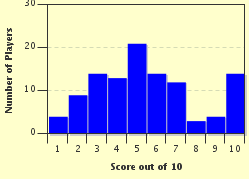Quiz Answer Key and Fun Facts
1. On a Wednesday evening, a computer located in UCLA successfully sent an electronic message to another one in the Stanford Research Institute, marking the birthday of what became the Internet as we know it. On what date did this happen?
2. Which renowned engineer is considered the "Father of the modern Internet" because of his fundamental contributions to the World Wide Web architecture?
3. Back in old times, computer viruses used mainly floppy disks to spread and infect as many systems as possible, but since very early viruses also used networked computers to do their evil things. On what year did the first malignant code infect a computer?
4. Can you guess the year in which Gary Thuerk sent the first unsolicited electronic message with commercial intentions, starting one of the worst plagues of the Internet and later baptized, with a humorous note in the best Monty Python style, as "spam"?
5. In 1987 an evil phenomenon started in a Bulletin Board system (BBS), jumped from there to Usenet and later kept spreading and affecting millions of gullible users around the world. What was it?
6. On 1998, software engineer Steve Gibson discovered a cookie in some e-commerce websites that tracked user browsing habits and send them back to a server. What is the generic name for this wicked practice (not restricted to cookies)?
7. Memes, the angular stones of the Internet collective imaginarium... can you point the first meme that went mainstream? We are talking 1996...
8. Browsers are software that allow us to access the Internet. Which browser, notorious for its lack of standards compliance, multiple quirks and security holes has the dubious fame of being called the most hated browser in Internet history, and even so it hung around for over ten years?
9. Some mischievous 4chan user in 2007 published a link to a -supposed- Grand Theft Auto IV trailer but in fact it brought the unsuspecting visitor to a music video that never gave us up. What became the name of this practice, repeated ad infinitum?
10. Ahhh, cat videos... allegedly the second-only most frequent content on the Web, accountable for billions of dollars of lost productivity and many, many laughs... do you know when the first ever known cat video was filmed, and when was it uploaded to Youtube?
Source: Author
kadm
This quiz was reviewed by FunTrivia editor
WesleyCrusher before going online.
Any errors found in FunTrivia content are routinely corrected through our feedback system.

